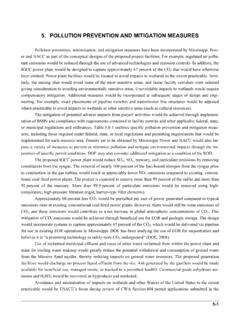Transcription of Geology of Rare Earth Deposits
1 Geology of Rare Earth DepositsTracy Bank, Elliot Roth, Bret Howard, Evan GraniteRare Earth elements are not 200 x more abundant than Au LREE more abundant than HREE Occur in common minerals in low concentrations Rarelyfound in high concentrations in abundant minerals Due to coordination number, ionic radius, and chargeLREEHREEThe trouble with REE have large radii, high charge, and just don t fit into the most common mineral structures (silicates) Coordination number (CN = # nearest neighbouranions around a cation in a mineral structure) is high for REE CN of some common minerals Quartz (SiO2) CN=4, Garnet (Ca3Al2Si3O12) Ca CN = 8, Al CN = 6, Si CN = 4 CN of REE between LREE and HREE LREEs have high CN (>9) BastnaesiteCN = 11, Monazite CN = 9 HREEs have CN between 6-9 XenotimeCN = 85 REE34612CN = 12 5 REE34612Si+43412CN = 4 Major REE Minerals BastnaesiteREE(CO3)F is the most important REE ore or rare Earth elements (60-70% rare Earth oxides) Monazite REE(PO4) (50-78%) XenotimeYPO4(54-65%) Apatite Ca5(PO4)
2 3 Bastnaesite, Mountain Pass, CAPhoto credit Rob Lavinsky, , MadagascarPhoto source from a pegmatite vein in granite, NYSource credit John H BettsREE-enriched Apatite from Kona Peninsula, RussiaSource credit John H BettsRare Earth elements do not fit into most mineral structures and can only be found in a few geological environmentsWhat are the most common geological environments that host rare Earth elements ?General Geological Classification scheme of REE Deposits 1) Magmatic rare Earth Deposits a) Carbonatite Deposits Mountain Pass, CA;Bear Lodge WYb) Peralkaline depositsThor Lake, NWT; BokanMountain,AKc) PegmatiticApatiteFe-district, MinevilleNY2) Sedimentary rare Earth Deposits a) Residual / placerdepositsElliot Lake Mining Districtb) PhosphoriteDepositsFlorida/Idaho/midwest phosphatesc) Ion adsorption clays ChineseClay Depositsd) REE-bearing coalsPennsylvania?
3 ??Carbonatite (red) and Peralkaline (green) REE Deposits , Figure from USGS Scientific Investigations Report 2010-5070-J 180 140 100 60 20 20 60 100 140 180 Base from GTOPO30, Shuttle Radar Topography Mission, and National Elevation Data from the Geological Survey0 2,500 5,000 KILOMETERS0 2,500 MILES180 140 100 60 20 20 60 100 140 180 Base from GTOPO30, Shuttle Radar Topography Mission, and National Elevation Data from the Geological Survey0 2,500 5,000 KILOMETERS0 2,500 MILESREE-Y Deposits types Mountain Pass, CADifferent types of REE Deposits located globallyMajority are carbonatite and peralkaline in originMap courtesy of David Lentz, University of New BrunswickCarbonatites Carbonatites are igneous rocks that contain >50 wt% carbonate (CO32-) minerals Only 330 known locations on Earth Usually (almost exclusively) form in continental rift zones Geochemically enriched in incompatible elements (Cs, Rb, Ba, REE) Can host several wt% REE oxides Possibly form by partial melting of crustal rocks or mantle degassing Known carbonatites in NA include Mountain Pass, CA; Oka and Saint-Honor , QC; Gem Park and Iron Hill, CO.
4 Magnet Cove, ArkansasPhoto by Celia Nyamweru, USGSOlDoinyoLengaicarbonatite volcanoPeralkaline REE Deposits Peralkaline rocks are igneous rocks that are oversaturated with Na2O and K2O with respect to Al2O3 Al2O3< (Na2O + K2O) Magma may form from partial melting of metasomatized(hydrothermally altered) mantle Peralkaline granites form in island arc and mountain building regions (including Appalachia) REE-bearing minerals include apatite, xenotime, monazite and lesser bastnaesite Sinhaet al (1989) identified peralkaline granites in Concord and Salisbury plutonic suites of Appalachia Mildly peralkaline rocks associated with Robertson River batholith in VirginiaREE associated with Pegmatites and/or Magnetite Apatite Deposits Pegmatites are course-grained felsic igneous intrusive rocks that are rich in incompatible elements (including REE) Commonly enriched in apatite Ca5(PO4)3 A closed Fe mine near Mineville, NY has apatite in waste tailings that are enriched in REE Measured wt% REE oxides (Staatzet al.)
5 , 1980 Estimated 11 wt% REE oxides (McKeown and Klemic, 1956) With an estimated 10 million tons of waste Potentially 88 000 tons of REE oxides remainingPhoto credit Fred HaynesGeneral Geological Classification scheme of REE Deposits 1) Magmatic rare Earth Deposits a) Carbonatite Deposits Mountain Pass, CA; Bear Lodge WYb) Peralkaline depositsThor Lake, NWT; BokanMountain, AKc) PegmatiticApatiteFe-district, MinevilleNY2) Sedimentary rare Earth Deposits a) Residual / placer Deposits Elliot Lake Mining Districtb) PhosphoriteDepositsFlorida/Idaho/midwest phosphatesc) Ion adsorption clays Chinese Clay Depositsd) REE-bearing coalsPennsylvania???Paleoplacer(Uranium) Deposits of REE Placer Uranium/Au Deposits at Elliot Lake, Ontario have commercially produced REE Ore is hosted by pyritic quartz-pebble conglomerates formed from intense weathering of an Archean granite source rock ~ Ga Source rock is Canadian Shield some of Earth s oldest rock Small placer Deposits occur in Oak Grove TN, Idaho, Carolinas, Florida Most REE occurs in monazite in these small depositsElliot Lake Uranium Mining DistrictLocations of North American rare Earth concentrations from Castor (2008)Paleoplacer(Uranium)
6 Deposits of REE Placer Uranium/Au Deposits at Elliot Lake, Ontario have commercially produced REE Ore is hosted by pyritic quartz-pebble conglomerates formed from intense weathering of an Archean granite source rock ~ Ga REE are associated with uranium minerals including: uraninitebrannerite, and uranothorite, monazite and zircon is also present HREE are more concentrated than LREE Average grade ~1600 ppm REE REE in phosphoritedeposits Phosphoritedeposits form as chemical precipitates on continental shelves, Upwelling of cold, phosphate rich waters causes warming and decreases in solubility REE substitutes for Ca in the mineral francolite(Ca,Mg,Sr,Na)10(PO4,SO4,CO3)6F 2 34oC15oCPO43-CO32-High solubility of carbonate and phosphate ( ppm) at low T, deep oceanLow solubility of carbonate and phosphate (.)
7 003 ppm) at higher T, continental shelfContinental Shelf Ca5(PO4)3 precipitatesCO2(g)Emsboet al 2015 GondwanaResearch Up to 5000 ppm REE, mean value of ~1000 ppm Enriched in HREE, mean ~500 ppm Upper Devonian and Mississippian Phosphorites(>380 Ma) up to 18000 ppm REE Nearly 100% extractable with dilute acidIon Exchangeable REE in Clay Deposits REE found in soils deposited after weathering of granitic source rocks Occur primarily in China, sometimes called laterite Deposits REE adsorbed to kaolinite, halloysiteand illiteclay minerals Ore is relatively low-grade, generally only to REO, with high heavy REE Easily extractable REE are highly profitable due to low extraction costs Laterite Deposits contain higher concentrations of HREEAre REE Laterite Deposits in the US?
8 Similar granitic source rocks in Eastern US (Appalachia) may have weathered to form REE-enriched laterite Deposits Rozelle et al., 2016 reported highly exchangeable sources of REE from PA clay samples Foley and Ayuso(2015) found REE-enriched regolith (2900 ppm) weathered from the mildly peralkaline Robertson River batholith Formation of REE laterites dependent on both enriched source material AND chemical weathering conditions A detailed study of Th/K may indicate formation of laterite Deposits Th/K > 17 possibly indicative of leaching and K depletion High Th/K field samples have been collectedREE in Coal-related Sedimentary Rocks Overburden and underburdenrelated to coal seams may be resources of REE Sedimentary rocks accumulate REE from physical and/or chemical erosion of source material 466 field samples collected.
9 Few with >600 ppm REE have been collected1906518952050100150200>300ppmRE E+Y>400ppmREE+Y>500ppmREE+Y>600ppmREE+Y> 700ppmREE+Y>1000ppmREE+Y# of SamplesDry Whole Basis (N=466) Major Coal Basins in the United StatesTi/Al Geoproxyfor erosional rate As erosional rate of source material (granite) increases, Ti/Al increases In a given cyclothem, REE correlates positively with Ti/Al Suggests that REE in sampled material is physically weathered from Alleghenian granitoids Suggests REE was not transported as a dissolved, soluble species but as insoluble and non-reactive mineral grains Strong correlation between V and total REE REE spike at 617 ft Calm, anoxic conditions (high V) No dramatic change in Ti/Al Is this evidence of ion-exchangeable REE?
10 6006056106156206256306356406456500100200 300400500600700 Depth (ft) REE(ppm)REE whole rockTi/AlV High REE spike in sample with no correlation to Ti/Al High Th/K might also indicate clay adsorption X-ray Diffraction data support this hypothesis600605610615620625630635640645 6500100200300400500600700 Depth (ft) REE (ppm)Sum REETi/AlTh/KI = illite/muscoviteK = kaoliniteQ = quartzIKQQIIIIIKKKKKREE distribution in field samples1101001000 LaCePrNdSmEuGdTbDyHoErTmYbLuppm/ ppm chondritesNormalized Cl-Chondrite 23 Sep15-2423 Sep15-2523 Sep15-2623 Sep15-2723 Sep15-2823 Sep15-2923 Sep15-3023 Sep15-3123 Sep15-3223 Sep15-331101001000 LaCePrNdSmEuGdTbDyHoErTmYbLuppm/ ppm chondritesNormalized Cl -Chondrite23 Sep15-2423 Sep15-2523 Sep15-26 REE in Coal-related Sedimentary Rocks Field samples with high REE (>600 ppm)









